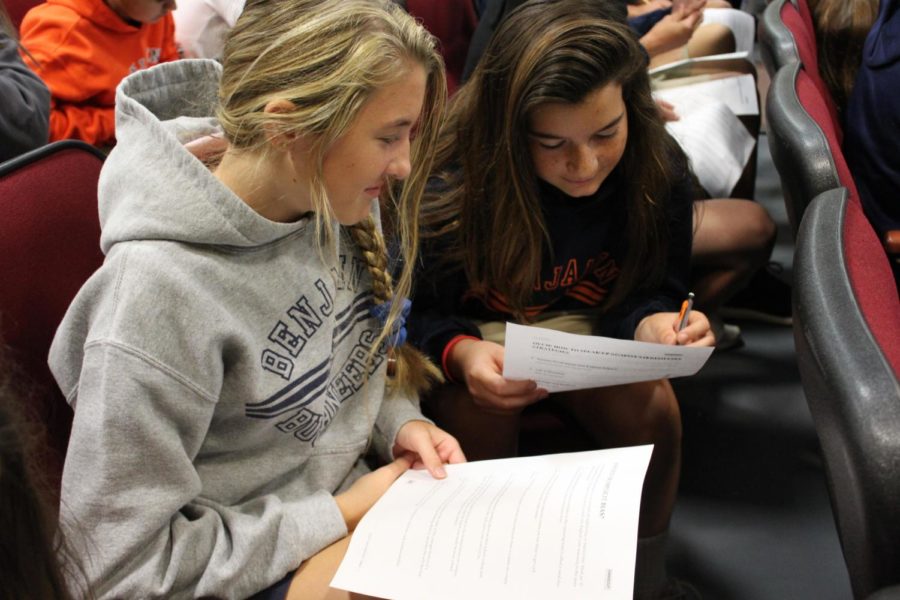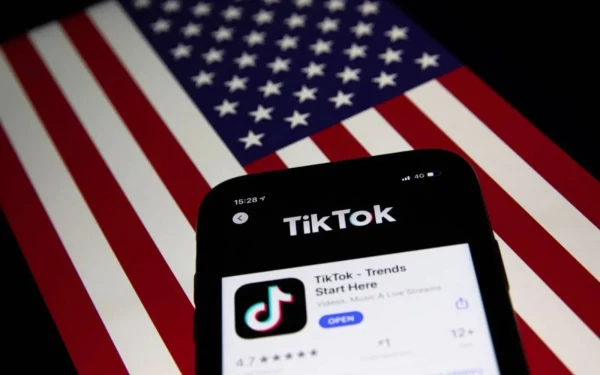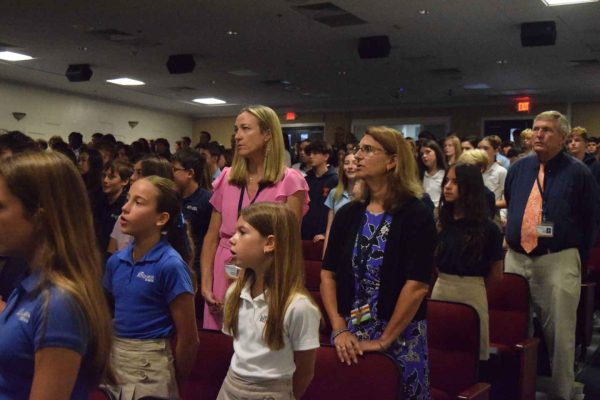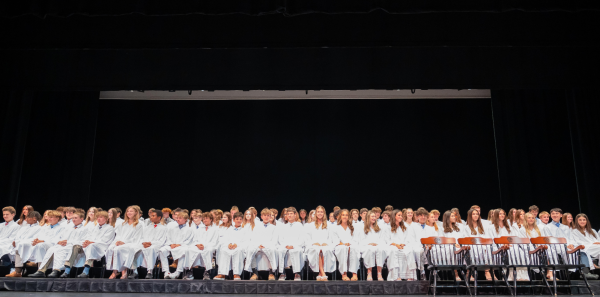Students Feel ADL Message Growing Stale
EIghth graders Kate SMall (left) and Lily Valentini look over a worksheet about explicit and implicit bias during the ADL workshop on October 26 in the Barker Performing Arts Center.
“I feel like it [ADL] helped a lot in sixth grade. But in seventh and eighth grade it wasn’t needed. We got the point, plus we learn about stuff like that in Skills [class],” said eighth grader Ignas Berciunas.
This seemed to be the popular sentiment regarding the Anti-Defamation League’s second visit to the Middle School on October 26. After visiting students during the first week of school, representatives from the ADL returned to TBS to address the sixth, seventh, and eighth grades separately. The goal for the ADL’s second visit focused on continuing to create a culture of kindness at Benjamin while exploring ways to limit microaggressions and bullying. The organization has named The Benjamin Middle School a “No Place for Hate” for the past three years. According to the ADL website (www.florida.adl.org), the No Place for Hate initiative “empowers schools to promote respect for individual and group differences while challenging prejudice, bigotry, name calling, and bullying.”
The ADL, whose mission according to its website, is to stop the defamation of the Jewish people, and to secure justice and fair treatment to all, separated the TBS students by grade level (sixth, seventh, and eighth) during its follow-up visit with the goal of talking more in-depth with about acceptance and understanding.
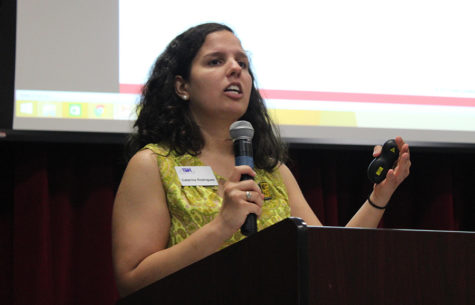
ADL representative Caterina Rodriguez talks to the eighth graders in the BPAC.
“These assemblies are a really great way to dive deeper into all the concepts students were introduced to in August,” said ADL representative Caterina Rodriguez, who worked with the eighth graders. “For the sixth graders, we dove deeper into what it means to be an ally in their personal lives. For seventh grade, we talked about ally strategies in the cyber world. And for the eighth graders, we dove deeper into what happens with microaggressions which is when we explore implicit bias.” The 55-minute assemblies also touched upon the negative effects of bullying in all of its forms – physical, verbal, and cyber.
Head of Middle School Mr. Charles Hagy explained that these continuing visits by the ADL help establish “a school culture of compassion, kindness, and advocacy of others – one free from bias and hatred. We get a good number of new students each year, and they need to hear this message right away. Our continuing students further their knowledge in this area.”
However, some of the middle school students seemed to tune out the message. “This second visit was repetitive and a waste of time,” said eighth grader Antonio Maciel. “We learned exactly what we learned in August.”
Fellow eighth grader Dylan Bernstein said, “I don’t think it was needed. I don’t even think we needed to do another assembly in August. I just think it should be in sixth and seventh grade. We learn the same stuff every time.”
Even the sixth graders, who heard the ADL’s message for the first time this year, felt that the information presented was redundant. “I think we are an anti-bullying school and we have been doing this for years,” said sixth grader Hannah Beam. “I think it was not needed. I don’t think they need to do this at all in any of the grades in Middle School.”
Some students, though, felt the ADL’s visit was necessary and worthwhile. “I think we did need this second visit because it will remind the students to stop bullying,” said sixth grader Charlie Noble. “If we only do it once, we will never be able to learn. It is important, [and]I think we need to do this for every grade.”
Despite the way some students feel, the ADL believes the middle schoolers have continued to make strides in treating one another kindly and standing up for those who are targeted.
“We have really noticed how ‘No Place for Hate’ has become a belief for the students, not just for the students and the administrators,” said Rodriguez. “The students are much more engaged.”
Rodriguez feels talking to middle schoolers about treating each other well is important because it sets them up for success in high school and beyond.
“This is a huge transition period between elementary and high school,” she said. “This is where the big formative years take place before you kind of set your identity in high school, and it is important to teach kids all these values and beliefs that ‘No Place for Hate’ embodies. That will really set the tone for high school.”
